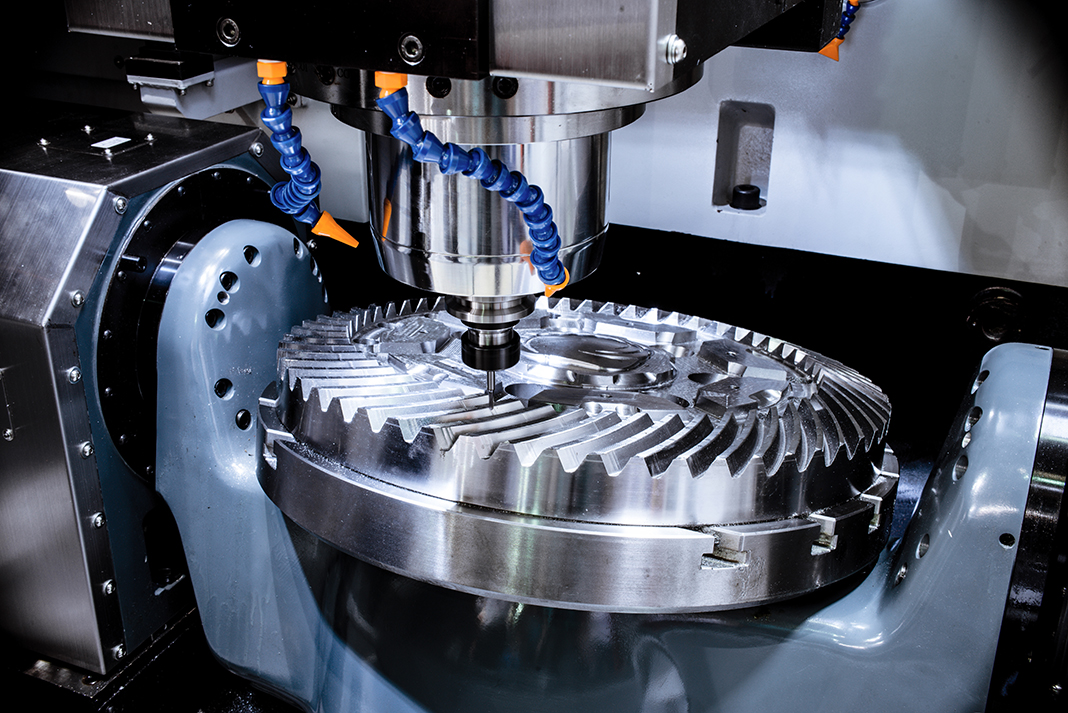Among all the forms of metal part fabrication that involve retaining the original integrity of the form as well as avoiding fundamentally weak points via welding or sautering, CNC machining continues to earn its place in custom part and piece fabrication, especially in terms of speed and multiple-unit delivery for unique projects. CNC machining definitely relies on computers to manage and drive their output, especially with a high level of accuracy and 24/7 capability possible. That said, programming is only as good a human being who writes the software and manages the machine as it works. Even computers will fail when they run into a glitch. So, the combination of professional experience with CNC machining makes the difference.
Grinding is a key element in the CNC machining process. It directly works down material to the level or point that matches a design, as well as allowing the operator to effect changes to a target material that is not near as possible or quick when applying a manual cutter or drill. Curves, shapes, depth and fluidity of form are all possible with grinding. The same can’t be said with a cutting device, no matter what the angle applied.
Types of CNC grinding includes rotating wheel applications, high speed abrasion wheel tools, surface removal and finishing, and specialized grinding contacts. Grinding can be used for both cutting and shaping as well as cavity creation, which is particularly useful when internal shaping has to be done and is not possible with a straight drill approach. Usually, grinding applied as a cutter is used on materials that are particularly hard, and it wouldn’t make sense to use a metal cutter on such surfaces. Stone, for example, would be far easier to cut with a grinder than a metal cutting tool.
On the other hand, an abrasion approach to grinding is far more focused on shaping than cutting. The abrasion can be applied as a wheel or a ball grinder point of contact, and with CNC machining worktables the work can be applied from at least three different angles and combinations of the same. The work is far more similar to a multiple contact approach to material removal versus a cutter that simply makes one contact and keeps working to cut through the material.
In practice, a good amount of CNC machining focuses far more on grinding than drilling or cutting. Grinding simply opens up the portfolio for far more choices in how a part can be shaped, created, fabricated and finished. Grinding is also instrumental in providing different surface treatments as well. That can range from rough to mirror-polished smooth. All types of edging and signs of cutting or flanging can be entirely removed with a grinding treatment, as if it never happened in the first place. And the computerized approach allows for 24/7 work at high efficiency and multiple unit output that can’t be matched by human work.
The second big advantage is accuracy in the quality of work. Computers simply advance the ability to control and manage grinding activities down to microscopic levels of accuracy and tolerance. This is ideal for high-stress part production such as that for aviation and high-performance vehicle assemblies. Every activity of the grinding tools matches exactly the details of the programing controlling them. This cuts down on variances, maintains an incredible consistency with quality of output, and reduces waste from bad parts failing inspection.
Specialized work is one of the unique areas of CNC grinding that can be replicated through other processes. Cutting, pressure, melting and even laser can’t come close to what is possible with specialized grinding. First off, there is tool grinding, which is ideal for helping reshape tooling that can be applied to stock materials, particularly high density, hard resources that take high quality equipment to work on. Thread grinding is another unique and special form of material removal. Shaped like a cylinder, these help refine or repair the base of a threaded cavity. Jig grinders, alternatively, provide the ability to produce holes in materials that are either shaped, as in tapered, or a straight line without deviation.
The production of CNC grinding is very similar to other CNC operations. The specifications of the work have to be prepared first as a software program that gives the machinery all the direction it needs to produce the expected part and its dimensions. Once complete and checked, the program then initiates and operates the grinding equipment attached to it. The targeted material will be moved to the correction position for the contact, or the tools will move around it multitasking (depending on the machine model). As the program is completed, the part will come into shape, matching physically the design that controlled the tools via the software commands.
